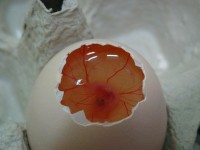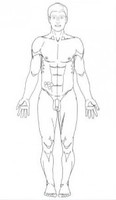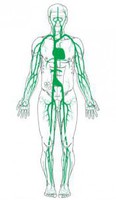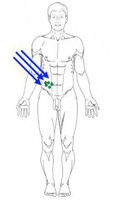
Hypericin And Curcurmin Photosensitizer
Hypericin And Curcurmin Photosensitizer

Photodynamic Therapy – Cancer treatment
PDT is a field of alternative cancer treatments is a promising method of treatment and is gaining more and more interest in addition to previously used chemotherapies, radiation and surgery to remove malignant tumor tissues.
PDT is much gentler on the patient and compared to common methods of treatment side effects and health risks are low.
With the help of a sterile catheter laser light can be directed into deep tissue layers. By this method, the blue as well the green laser light can exert their anti-inflammatory effect. Via the catheter internal Photodynamic Laser Therapy achieves successful results.
In Photodynamic Therapy patients get injected photosensitizers. Photosensitizers are light-activatable substances that due to their molecular properties bind selectively to tumor cells as a photosensitizer we use Chlorin E6, Hypericin and Curcumin.
A few hours after administration of the photosensitizer, in which the agent accumulates in the tumor tissue, the second treatment step is carried out.
A laser beam of a particular wave length leads to excitation or activation of the photosensitizer in the tumor cells.
By his molecular properties the photosensitizer accumulates selectively in the tumor tissue.
This produces oxygen radicals which have toxic effects on the tumor cells until finally the cell death occurs. The advantage of the PDT is the limitation of the therapy to the malignant tumor tissue by the specific and selective structure of the photosensitizer and focused laser radiation. The surrounding healthy tissue is not affected by the PDT-effect. The gentle PDT can be used as often as desired and can easily be combined with chemotherapy. The PDT-treatment is conducted in our outpatient clinic.
“Evaluation of hypericin-loaded solid lipid nanoparticles: Physicochemical properties, photostability and phototoxicity.”
Hypericin (HYP), a natural photosensitizer, has powerful photo-oxidizing ability, tumor-seeking characteristics, and minimal dark toxicity; nevertheless, it has proven high lipid solubility compared to its sparingly water soluble nature. Therefore, its formulation into solid lipid nanoparticles (SLNs) has attracted increasing attention as a potential drug-delivery carrier. Two HYP-loaded SLNs formulations were prepared utilizing microemulsion-based technique. Thereafter, the physicochemical properties of the formulations were investigated and evaluated. HYP-loaded SLNs showed spherical shape with mean particle size ranging from 200-300 nm for both formulations (FA and FB). The encapsulation efficiencies reached above 80% and FA showed significant higher encapsulation than FB (P < 0.05), also, the thermal analysis using differential scanning calorimetry (DSC) indicated good compatibility between hypericin and lipids forming the cores in both formulations. Spectroscopic measurements of the photostability study showed that hypericin encapsulation into SLNs improved its photostability, compared to free HYP in 0.1% ethanolic solution. However, photocytotoxicity studies on HepG2 cells revealed an evident inhibition of the photodynamic efficacy of HYP-loaded SLNs, compared to free HYP. In conclusion, although the elevated entrapment efficiency of HYP into SLNs increased its photostability, it decreased its phototoxicity which might be due to the quenching deactivation of HYP molecules resulting from SLN compactness and thickness structure.




